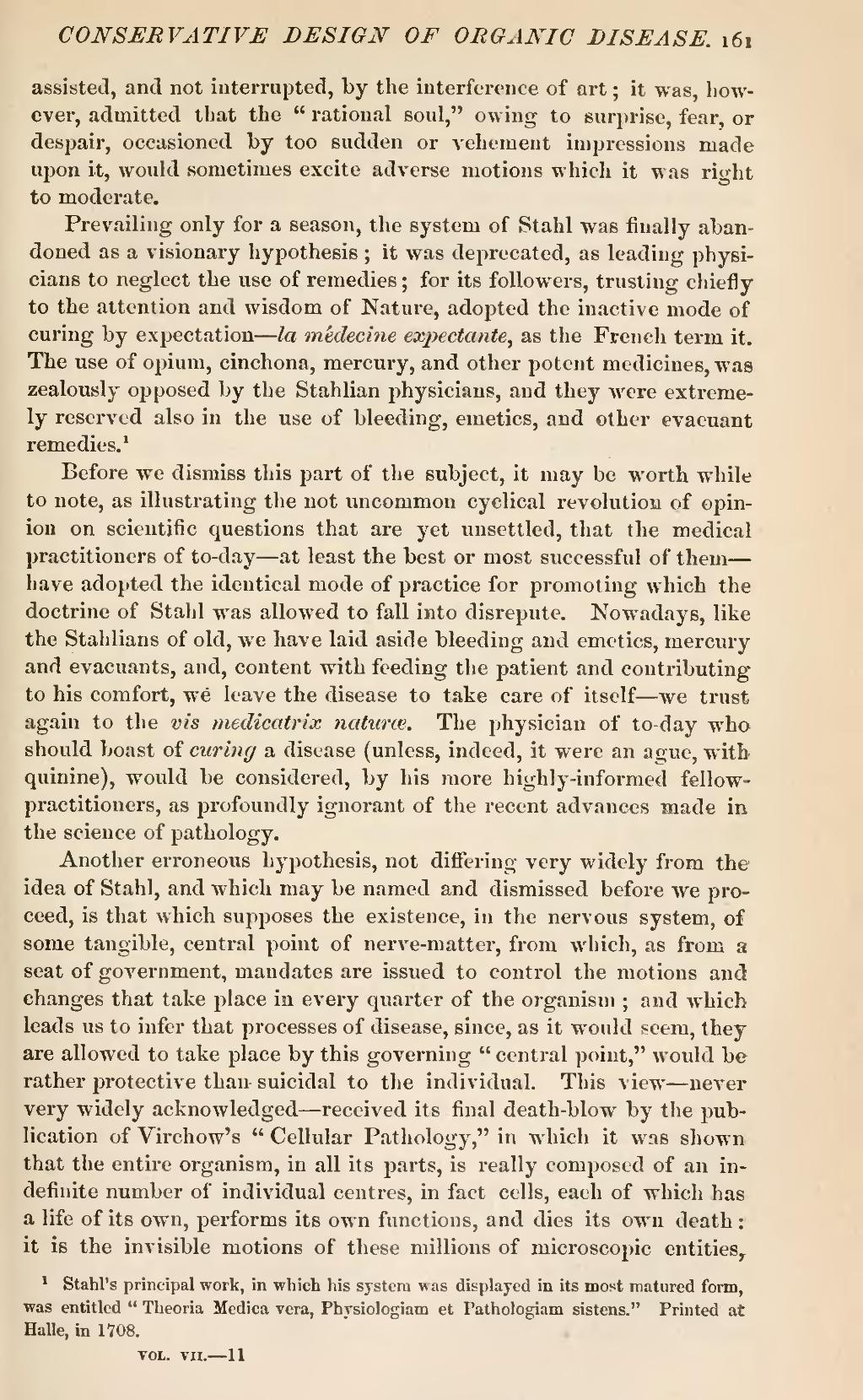assisted, and not interrupted, by the interference of art; it was, however, admitted that the "rational soul," owing to surprise, fear, or despair, occasioned by too sudden or vehement impressions made upon it, would sometimes excite adverse motions which it was right to moderate.
Prevailing only for a season, the system of Stahl was finally abandoned as a visionary hypothesis; it was deprecated, as leading physicians to neglect the use of remedies; for its followers, trusting chiefly to the attention and wisdom of Nature, adopted the inactive mode of curing by expectation—la médecine expectante, as the French term it. The use of opium, cinchona, mercury, and other potent medicines, was zealously opposed by the Stahlian physicians, and they were extremely reserved also in the use of bleeding, emetics, and other evacuant remedies.[1]
Before we dismiss this part of the subject, it may be worth while to note, as illustrating the not uncommon cyclical revolution of opinion on scientific questions that are yet unsettled, that the medical practitioners of to-day—at least the best or most successful of them—have adopted the identical mode of practice for promoting which the doctrine of Stahl was allowed to fall into disrepute. Nowadays, like the Stahlians of old, we have laid aside bleeding and emetics, mercury and evacuants, and, content with feeding the patient and contributing to his comfort, we leave the disease to take care of itself—e trust again to the vis medicatrix naturæ. The physician of to-day who should boast of curing a disease (unless, indeed, it were an ague, with quinine), would be considered, by his more highly-informed fellow-practitioners, as profoundly ignorant of the recent advances made in the science of pathology.
Another erroneous hypothesis, not differing very widely from the idea of Stahl, and which may be named and dismissed before we proceed, is that which supposes the existence, in the nervous system, of some tangible, central point of nerve-matter, from which, as from a seat of government, mandates are issued to control the motions and changes that take place in every quarter of the organism; and which leads us to infer that processes of disease, since, as it would seem, they are allowed to take place by this governing "central point," would be rather protective than-suicidal to the individual. This view—never very widely acknowledged—received its final death-blow by the publication of Virchow's "Cellular Pathology," in which it was shown that the entire organism, in all its parts, is really composed of an indefinite number of individual centres, in fact cells, each of which has a life of its own, performs its own functions, and dies its own death: it is the invisible motions of these millions of microscopic entities,
- ↑ Stahl's principal work, in which his system was displayed in its most matured form, was entitled "Theoria Medica vera, Physiologiam et Pathologiam sistens." Printed at Halle, in 1708.
